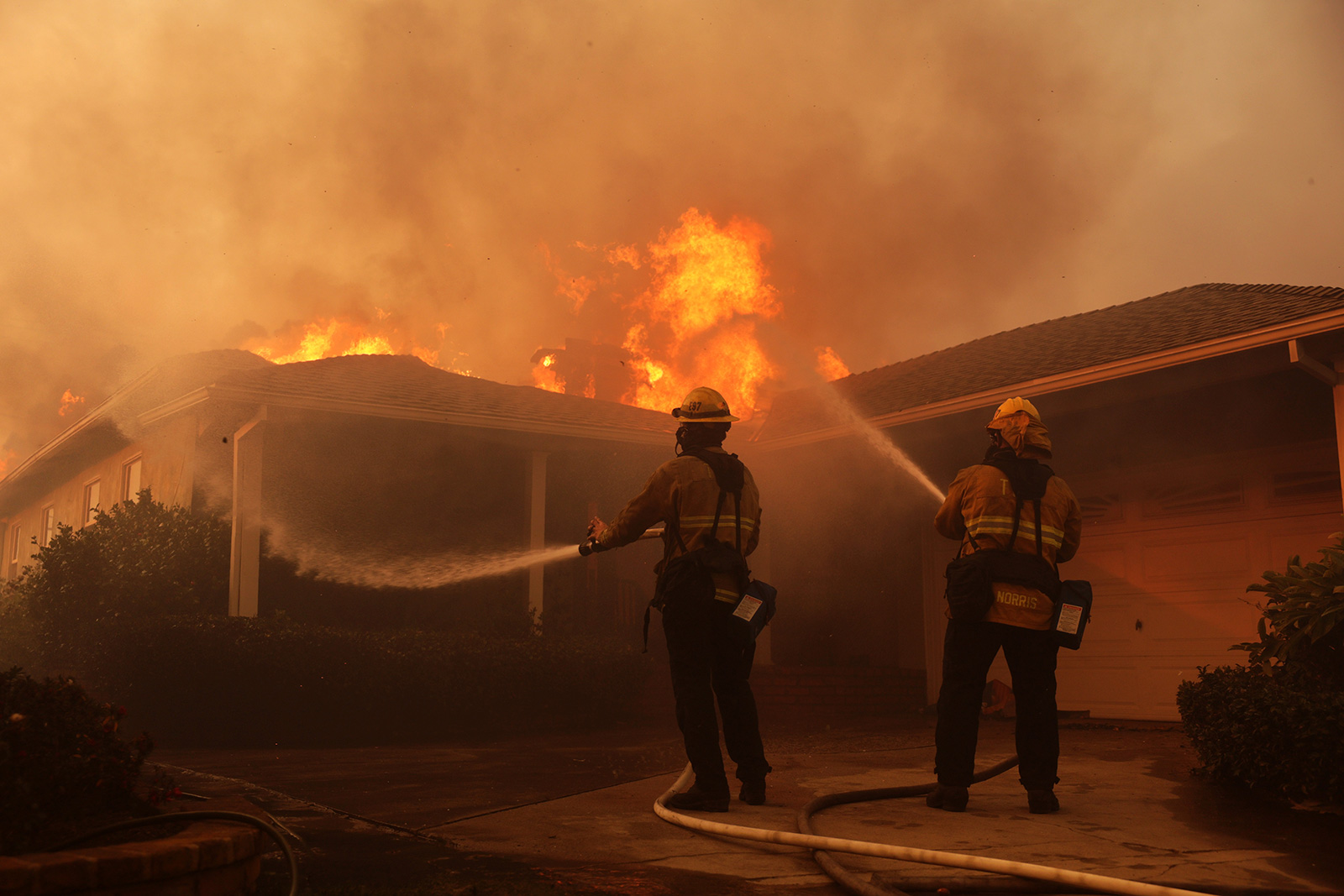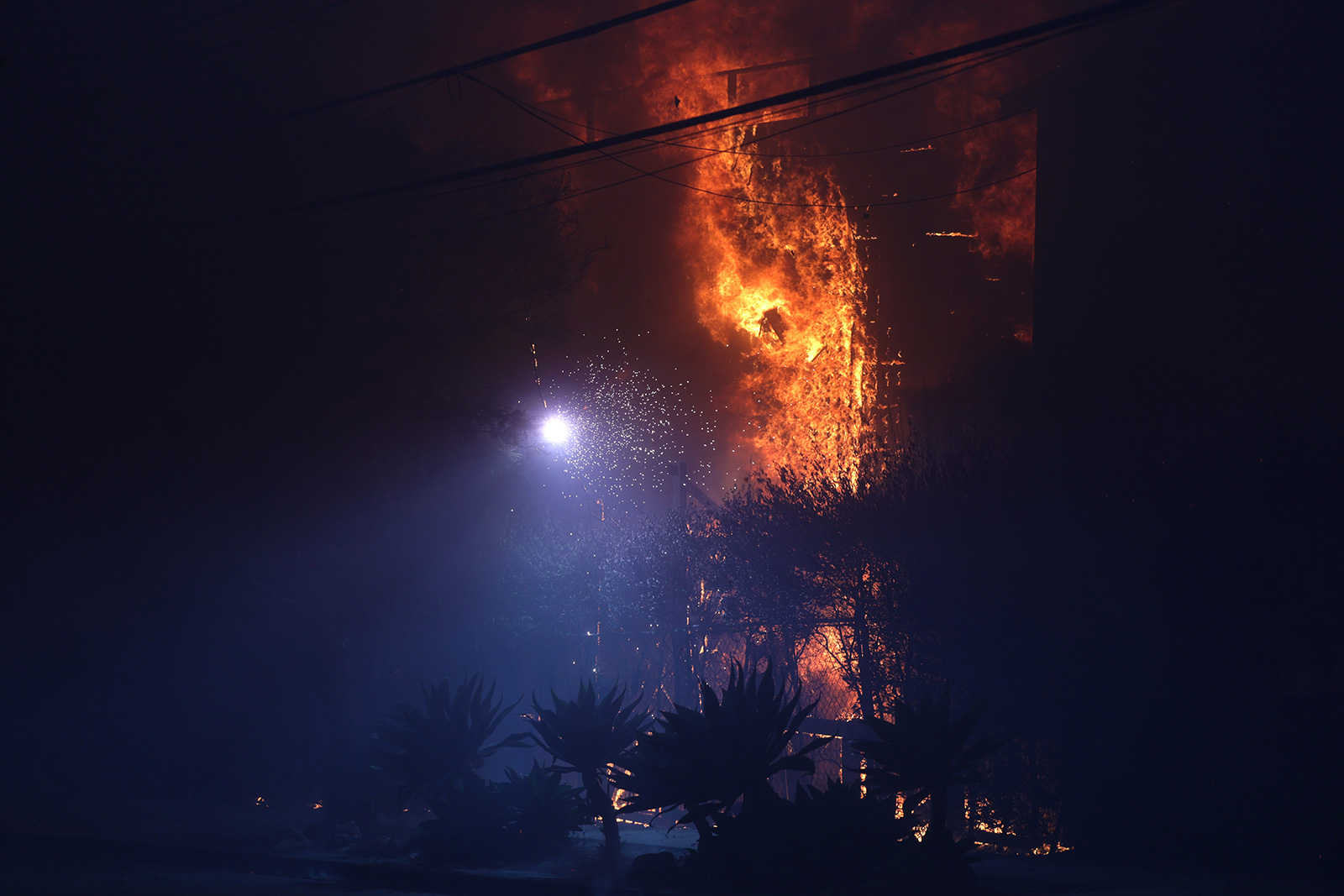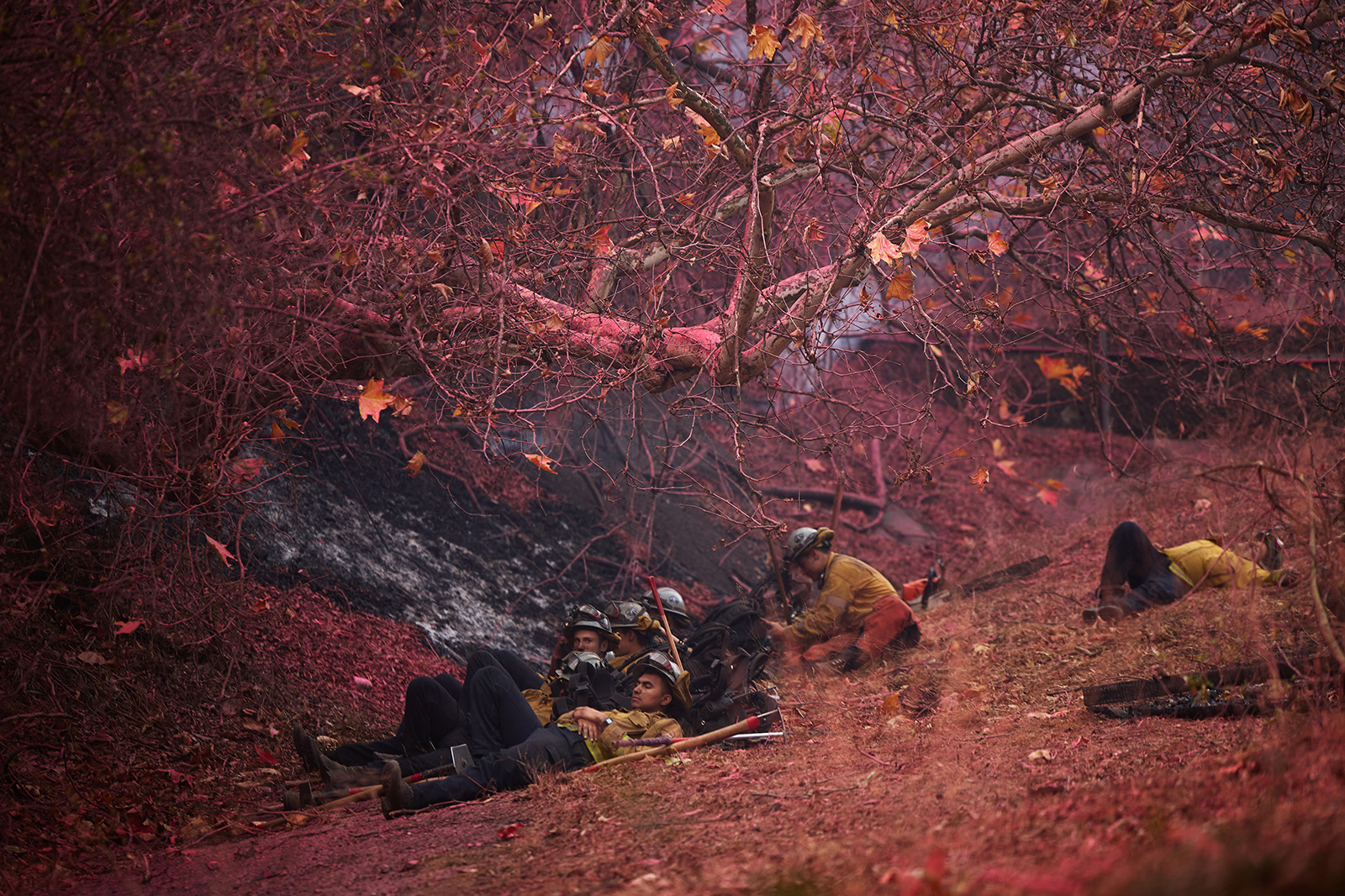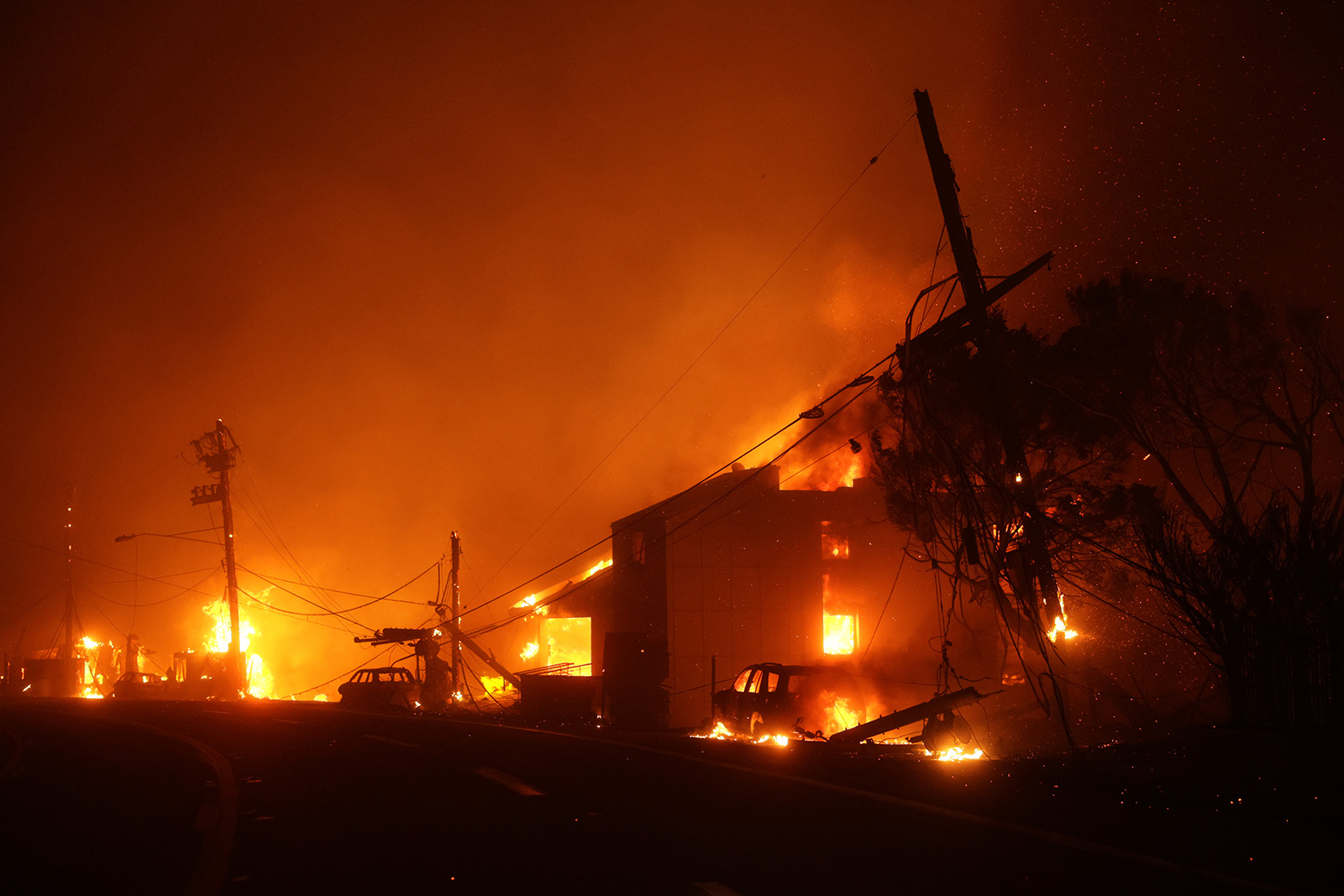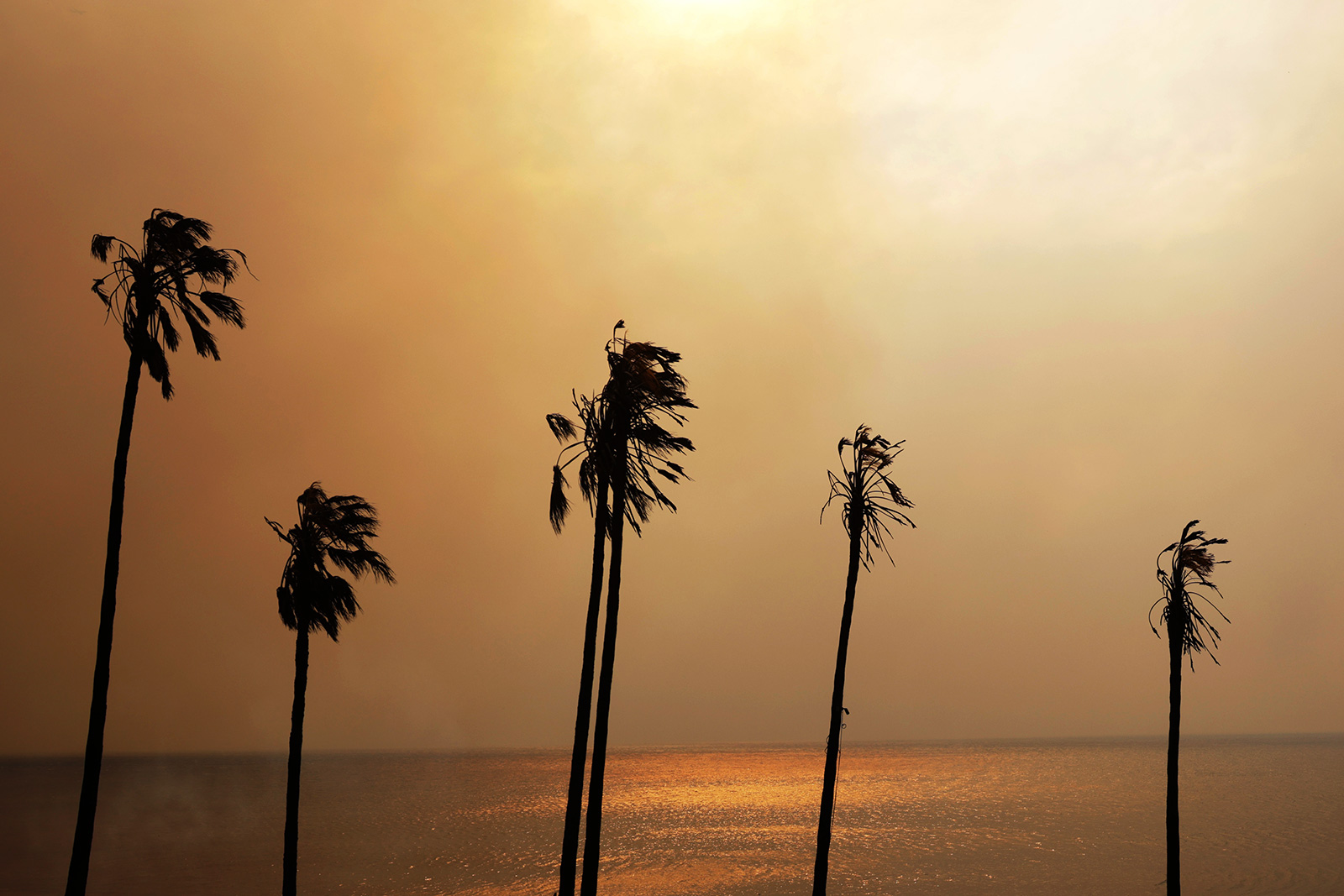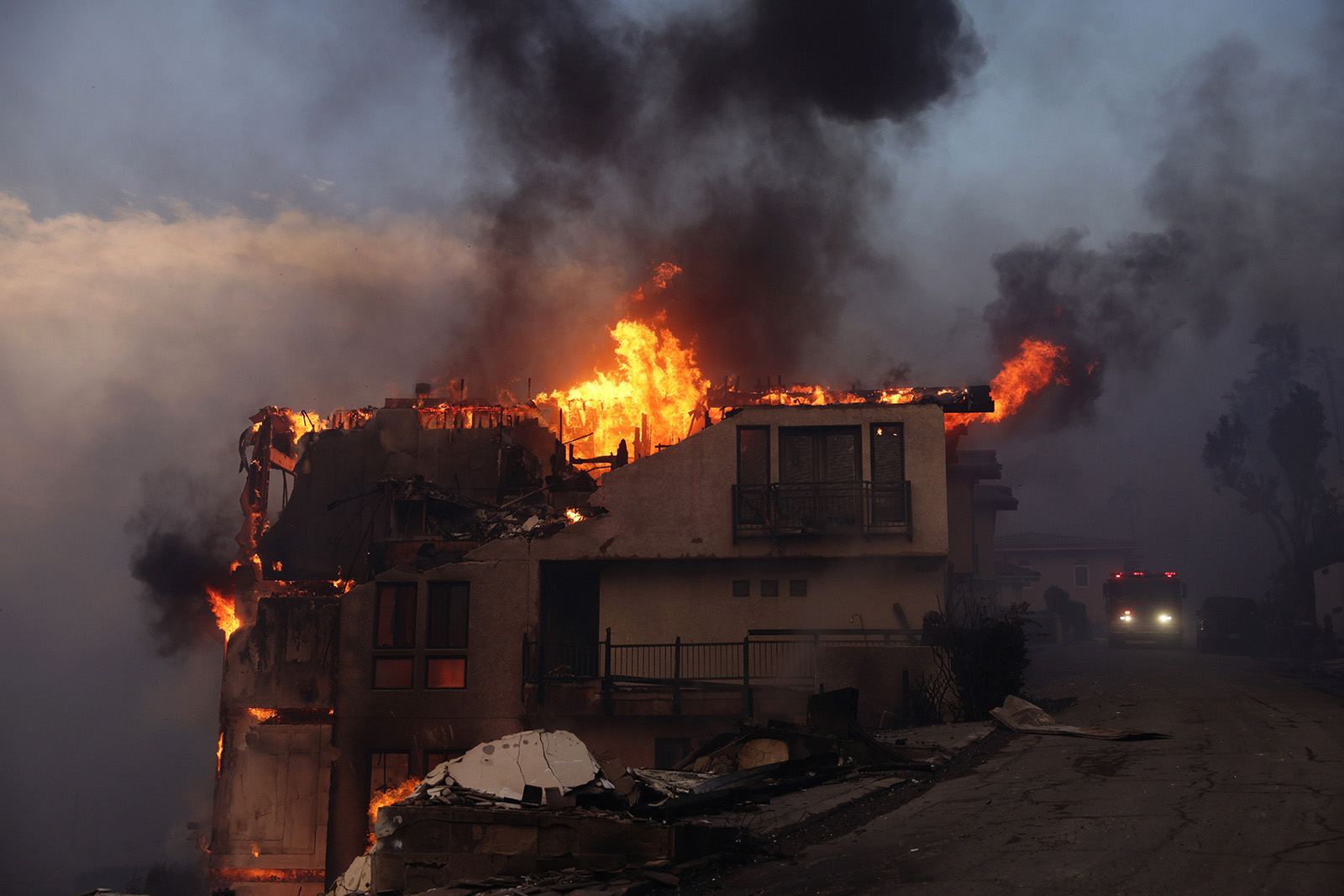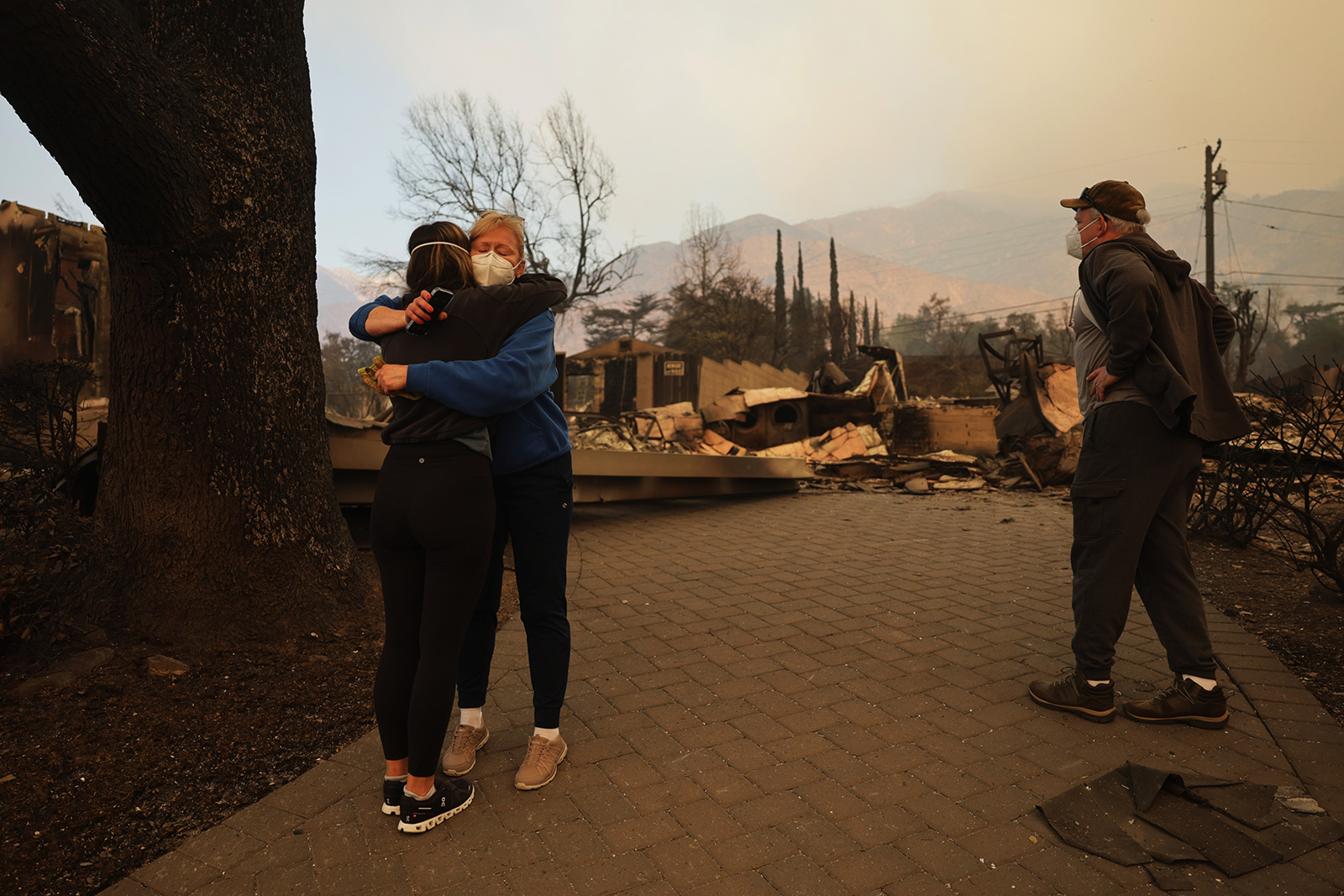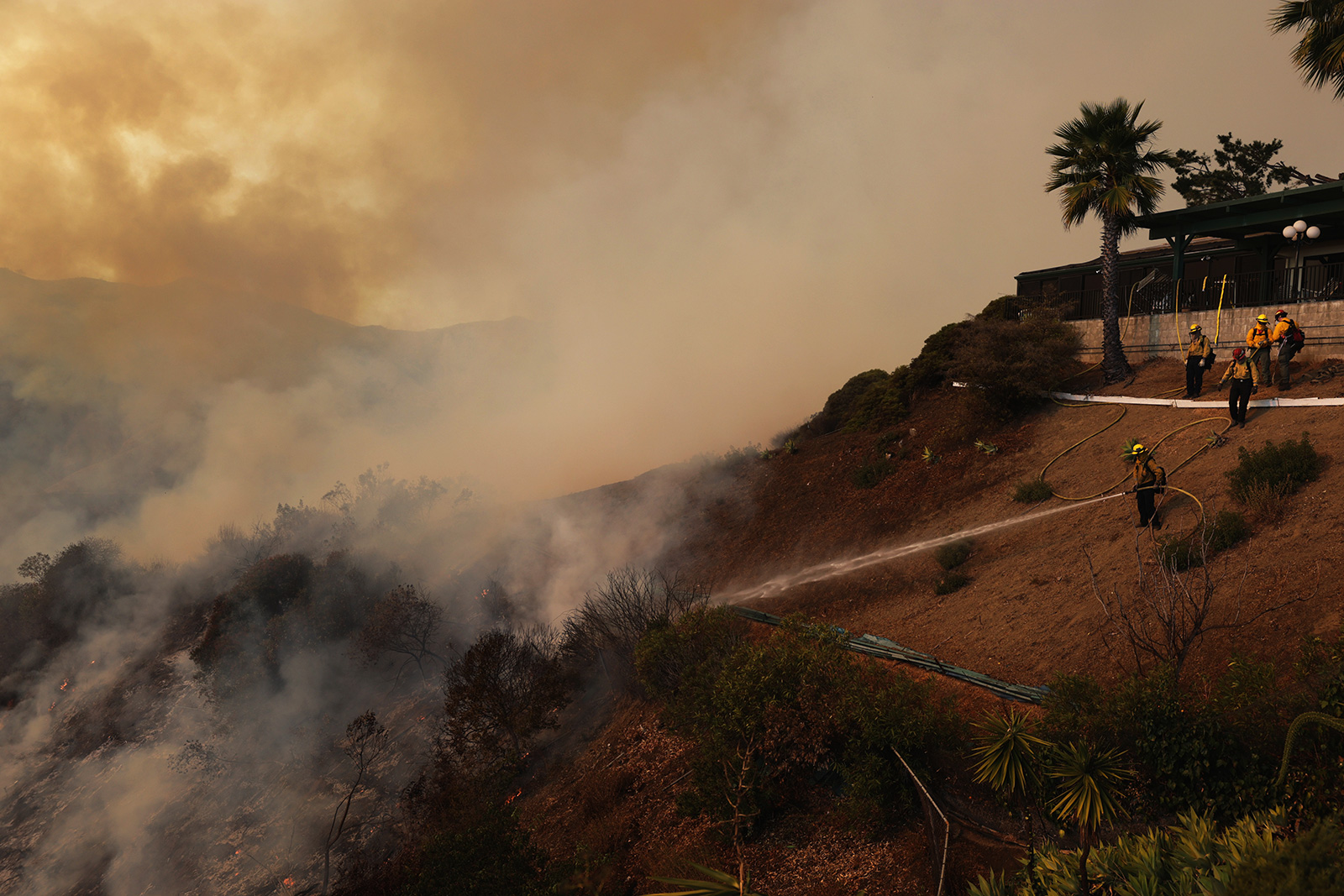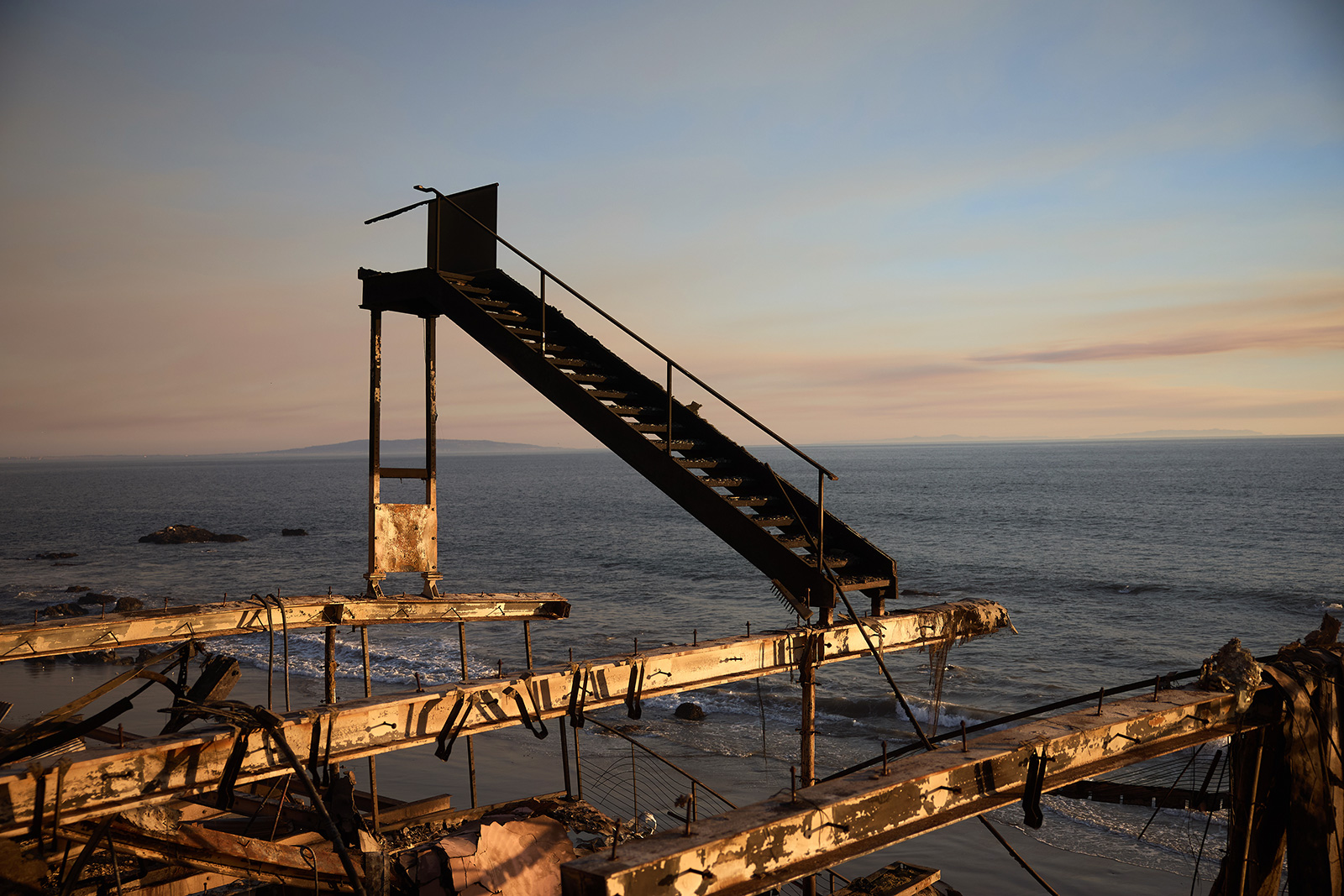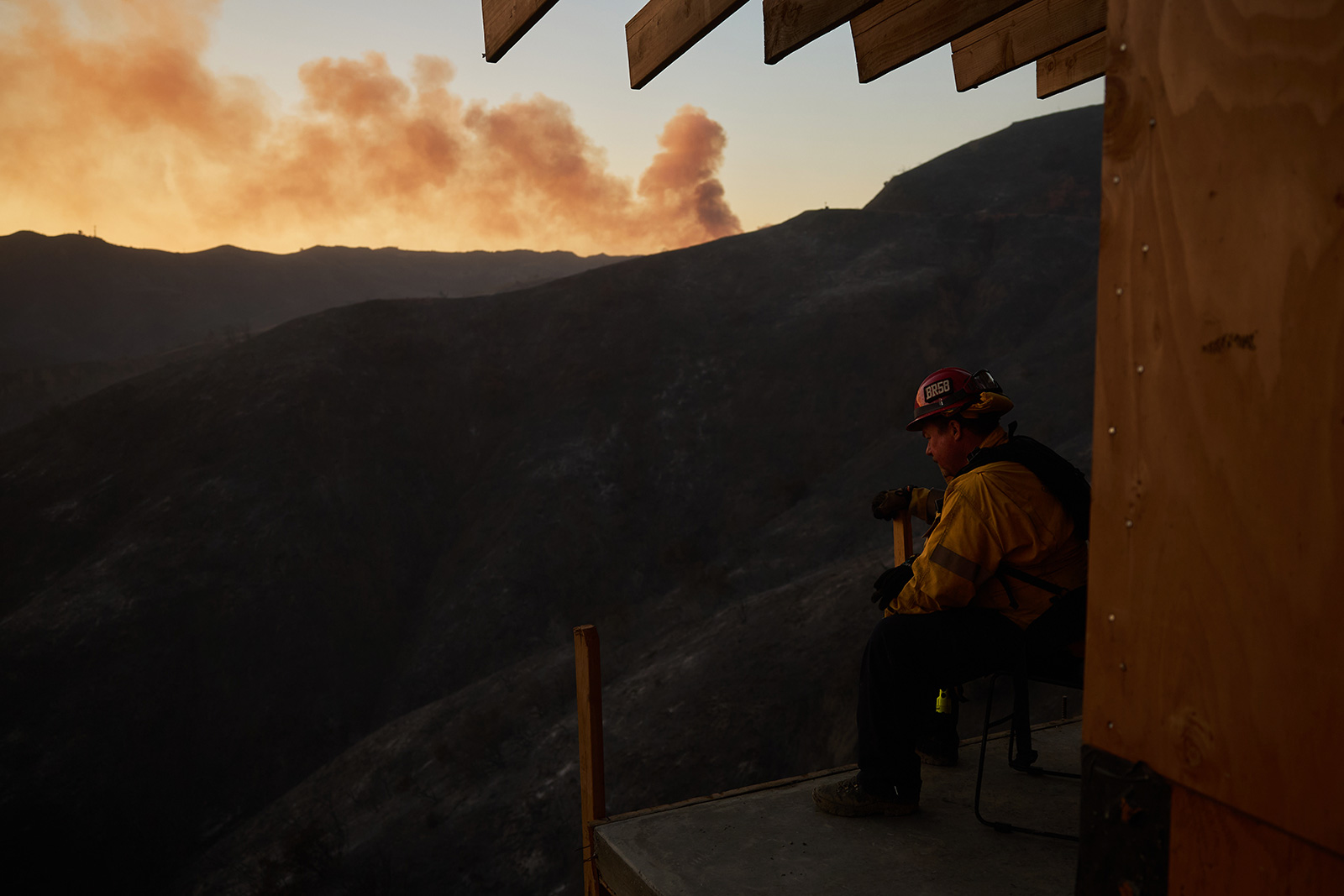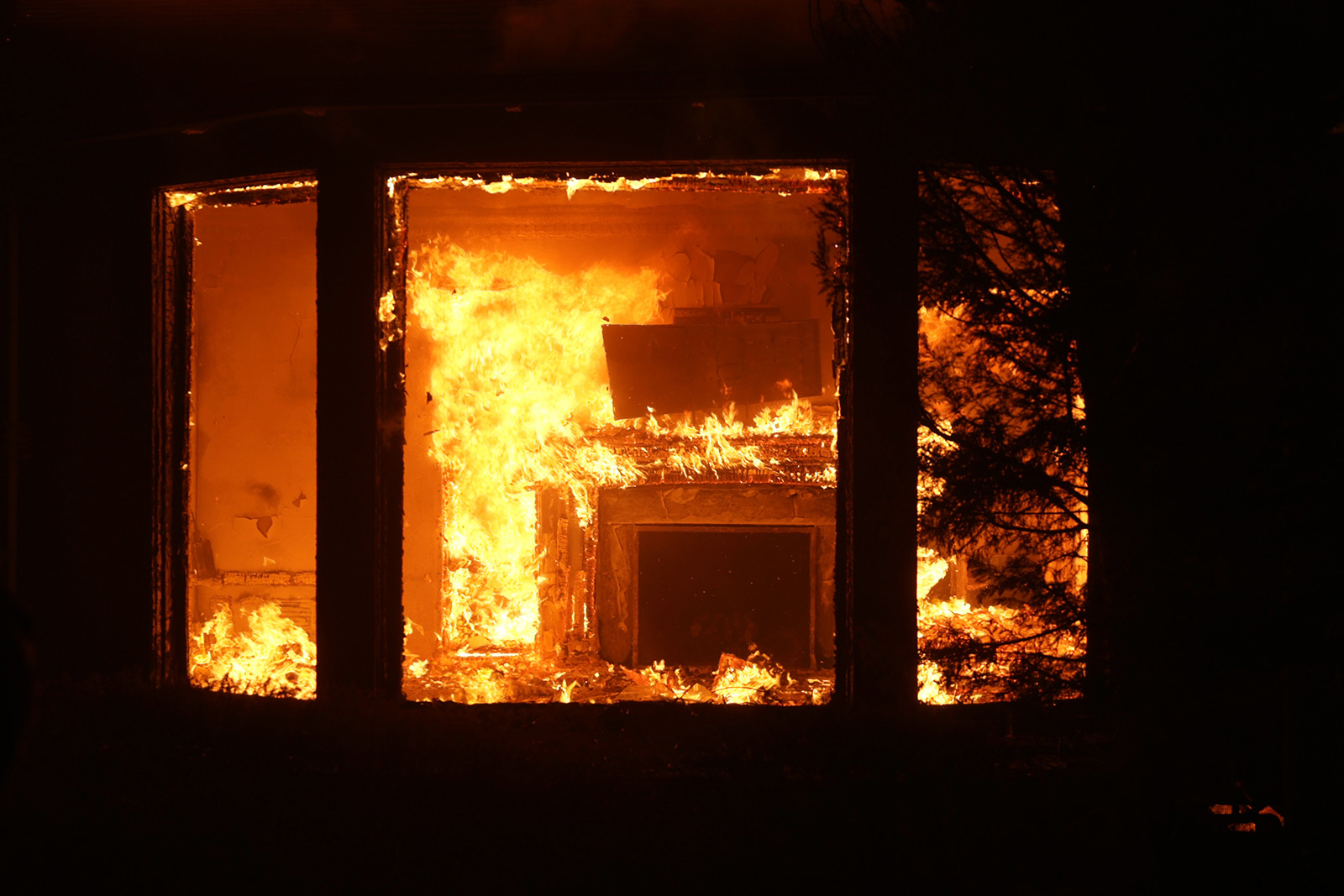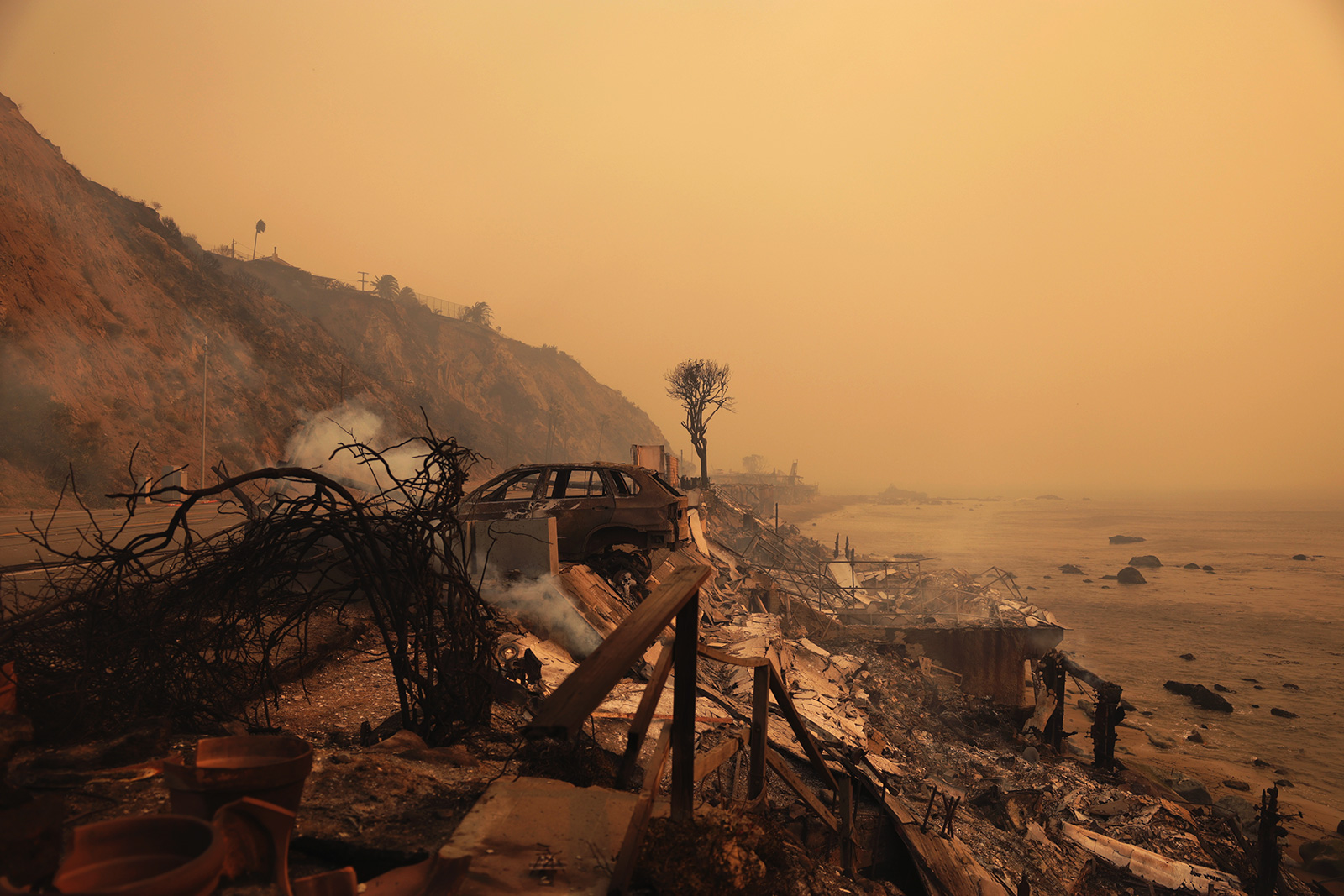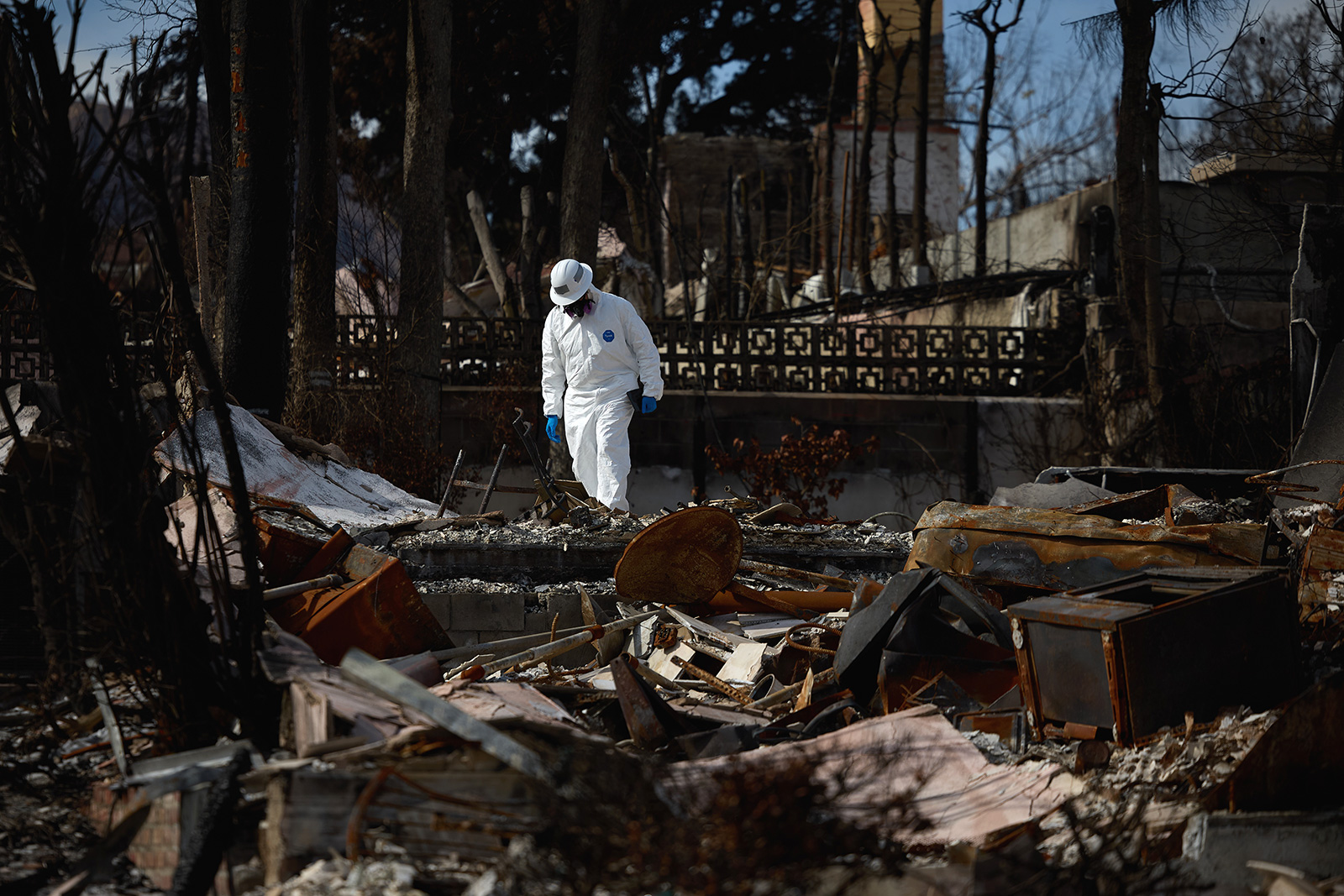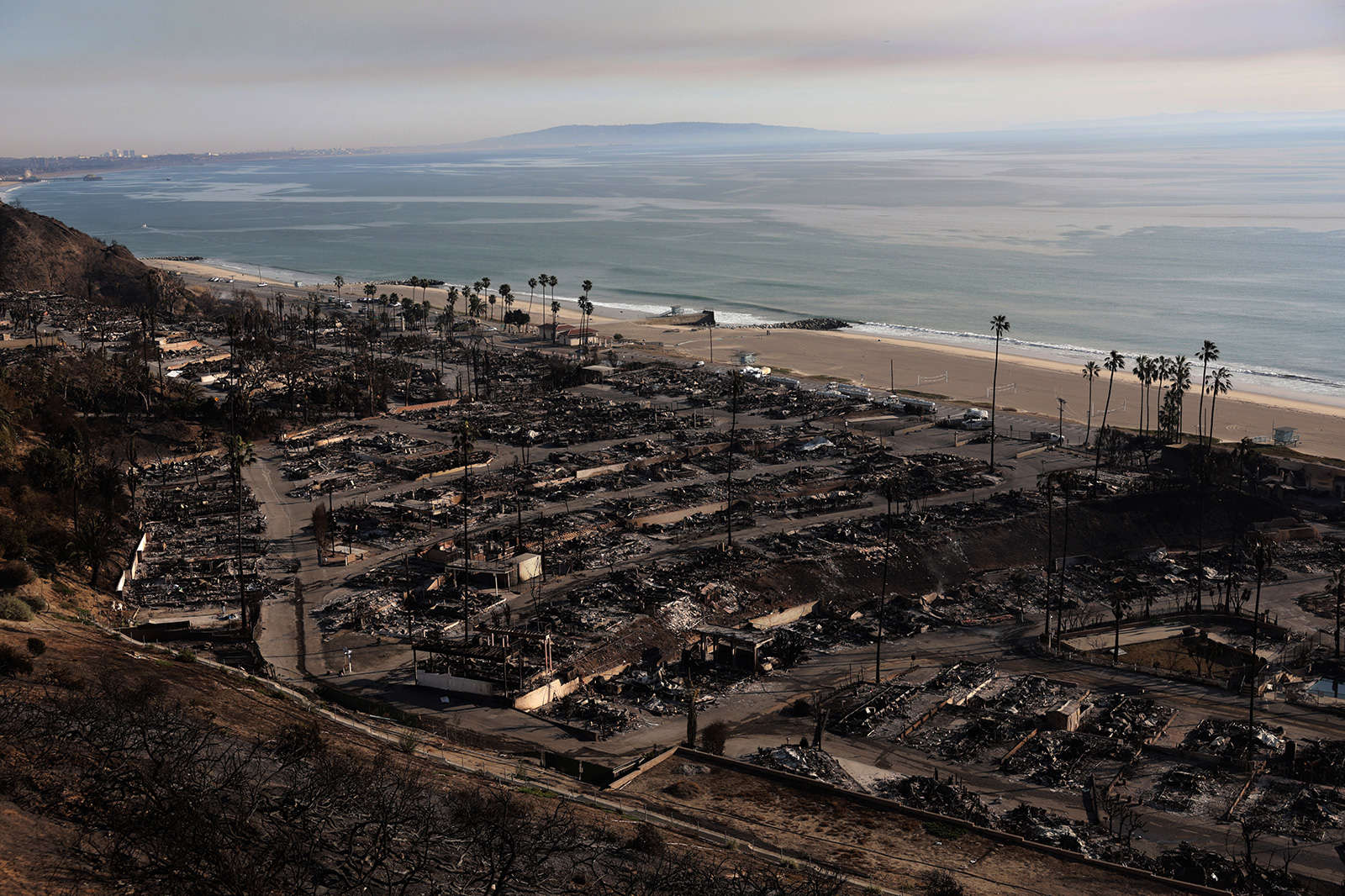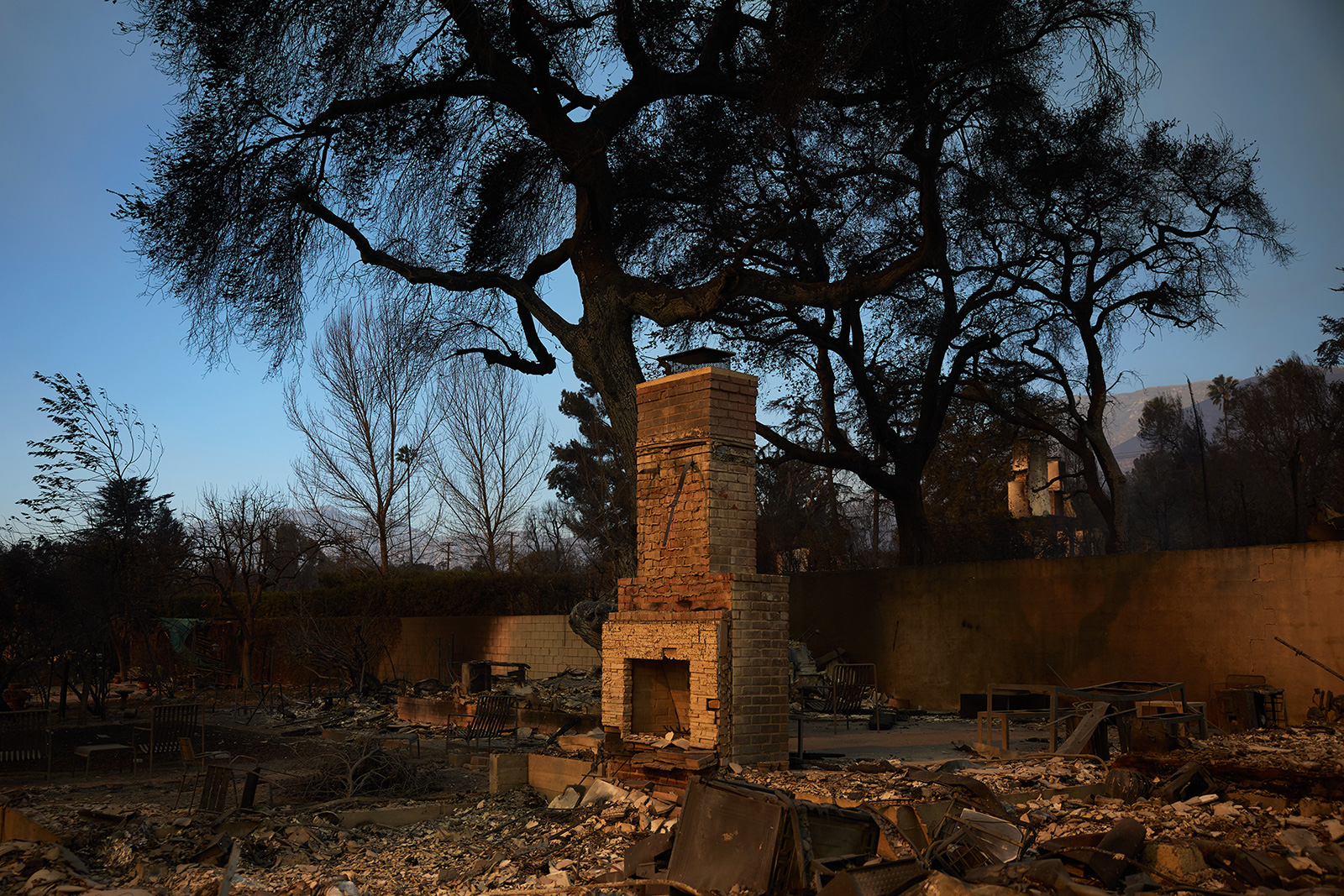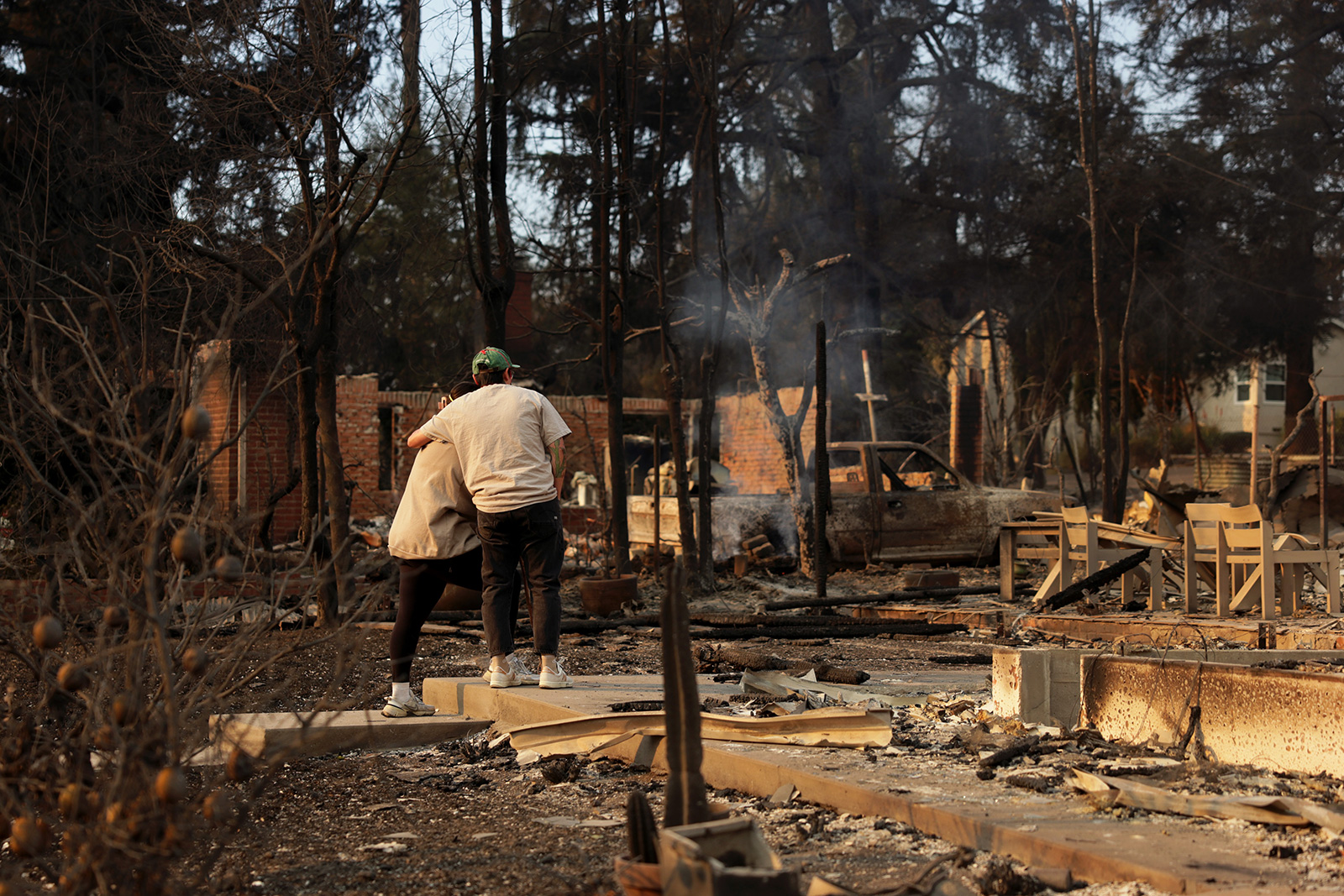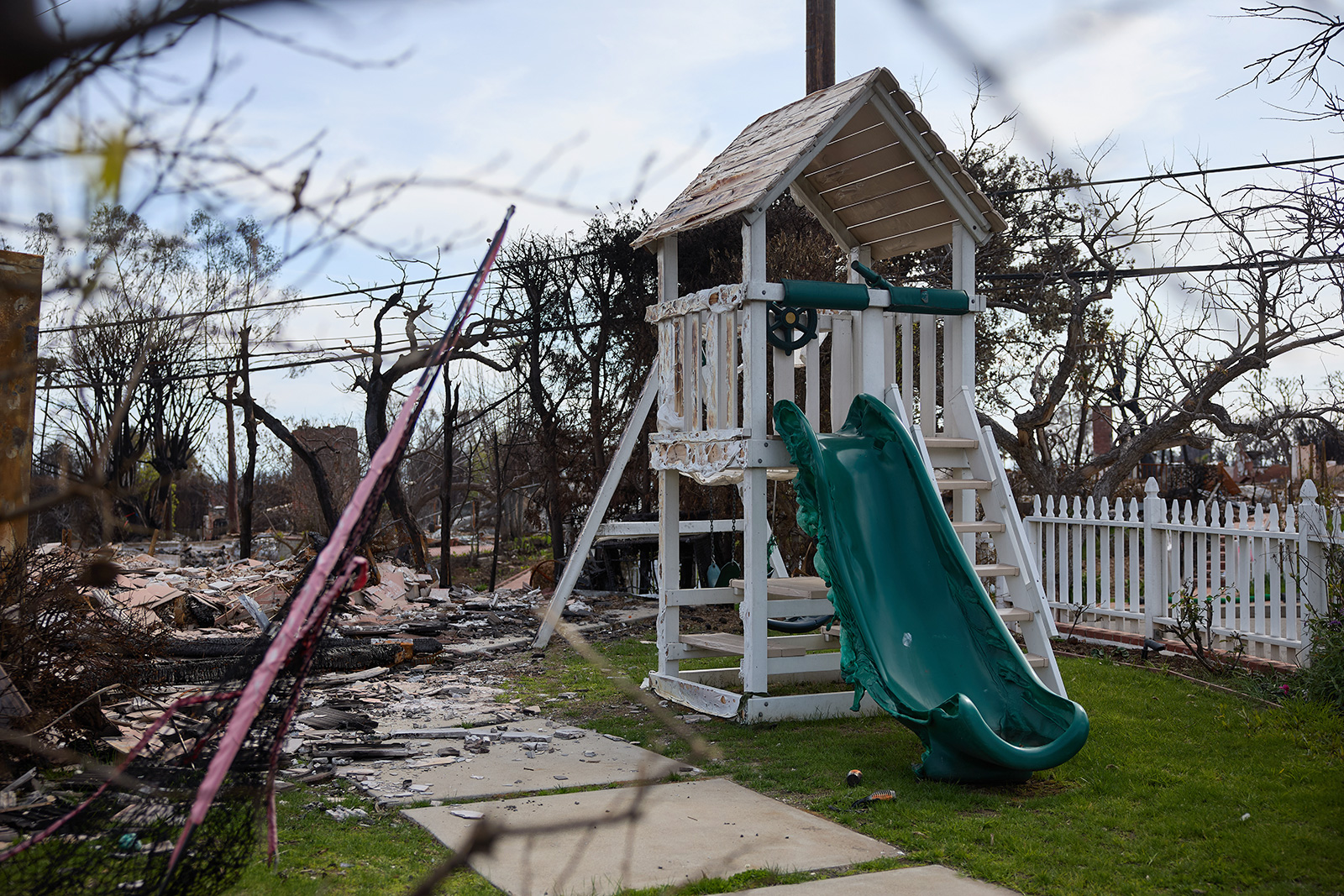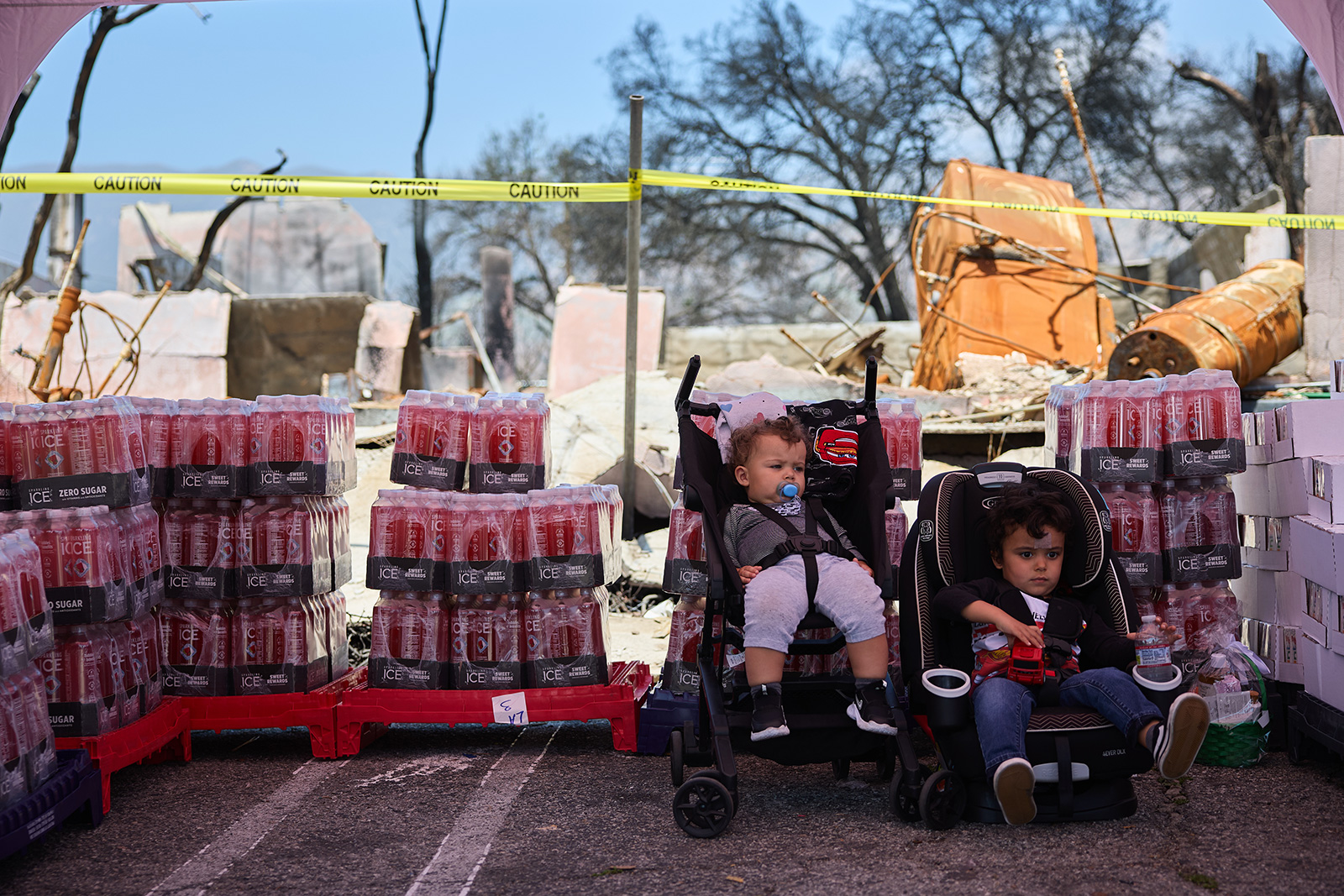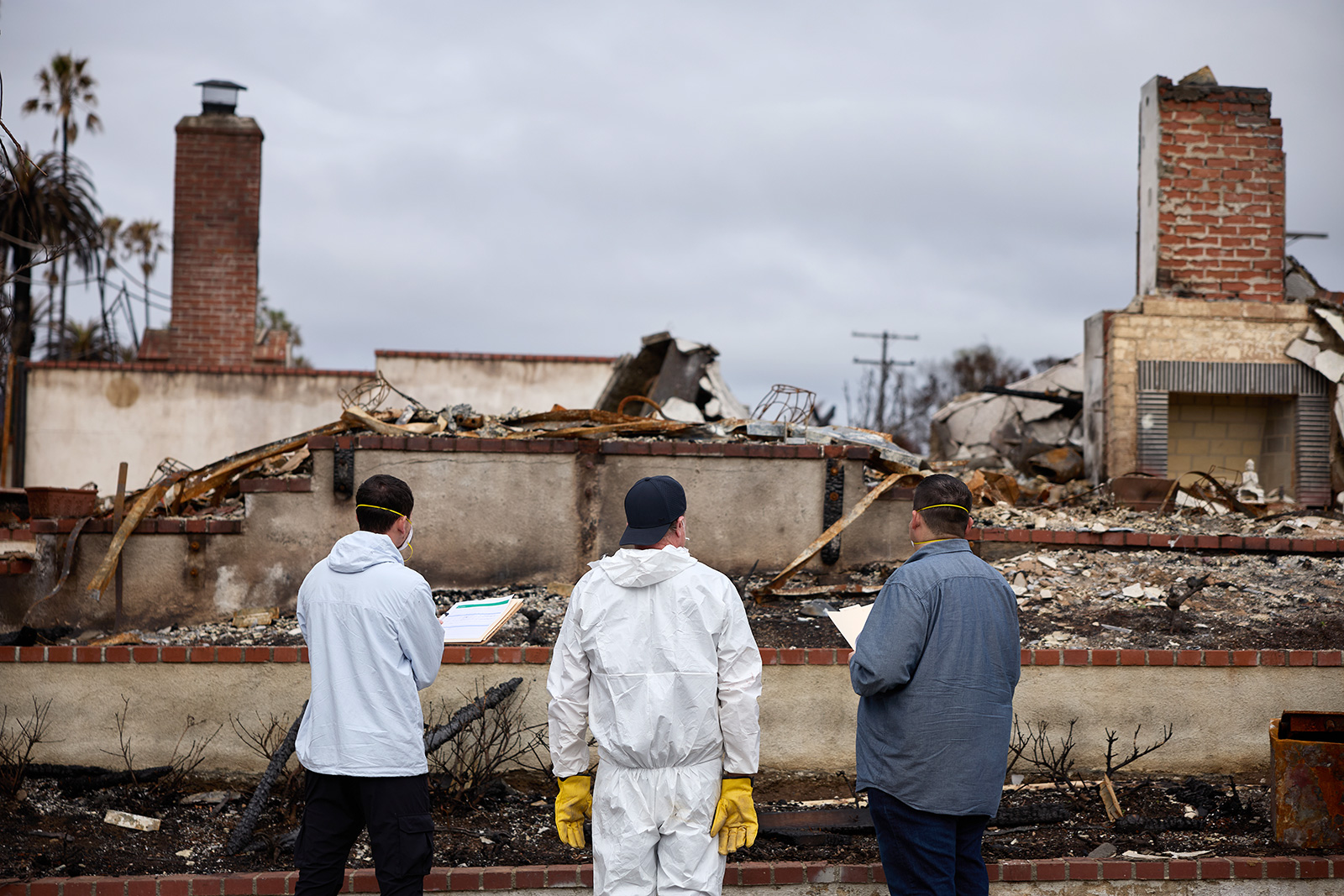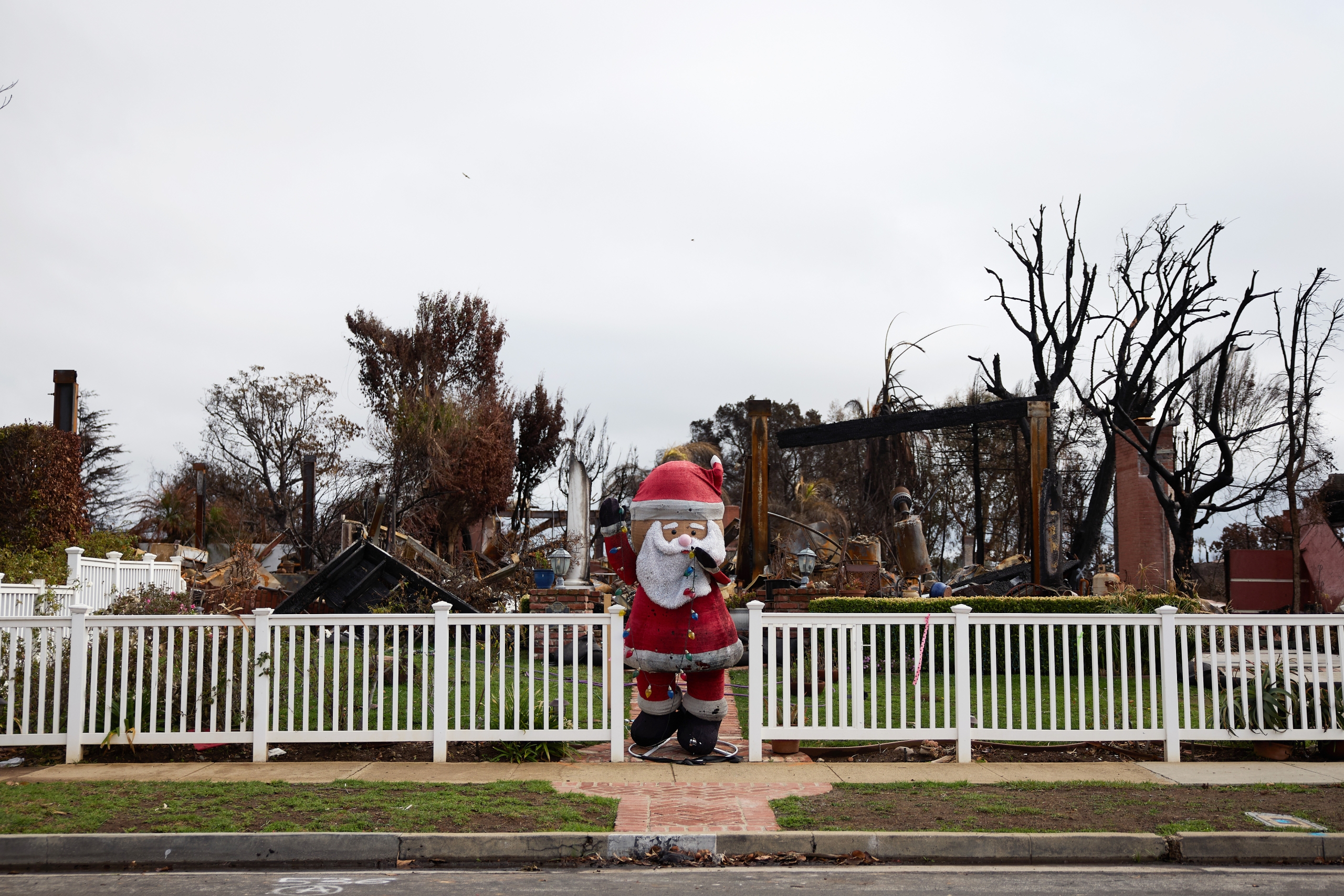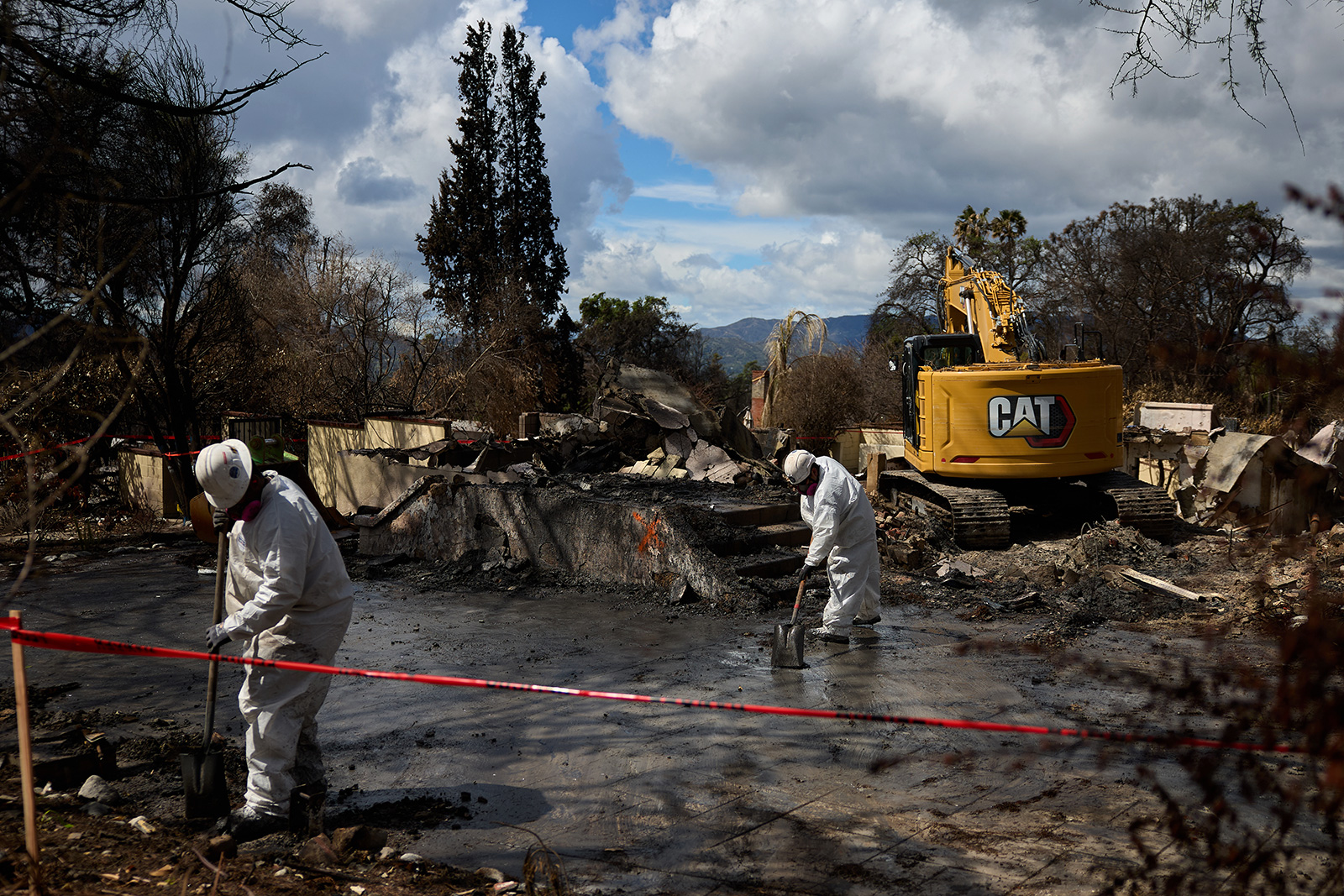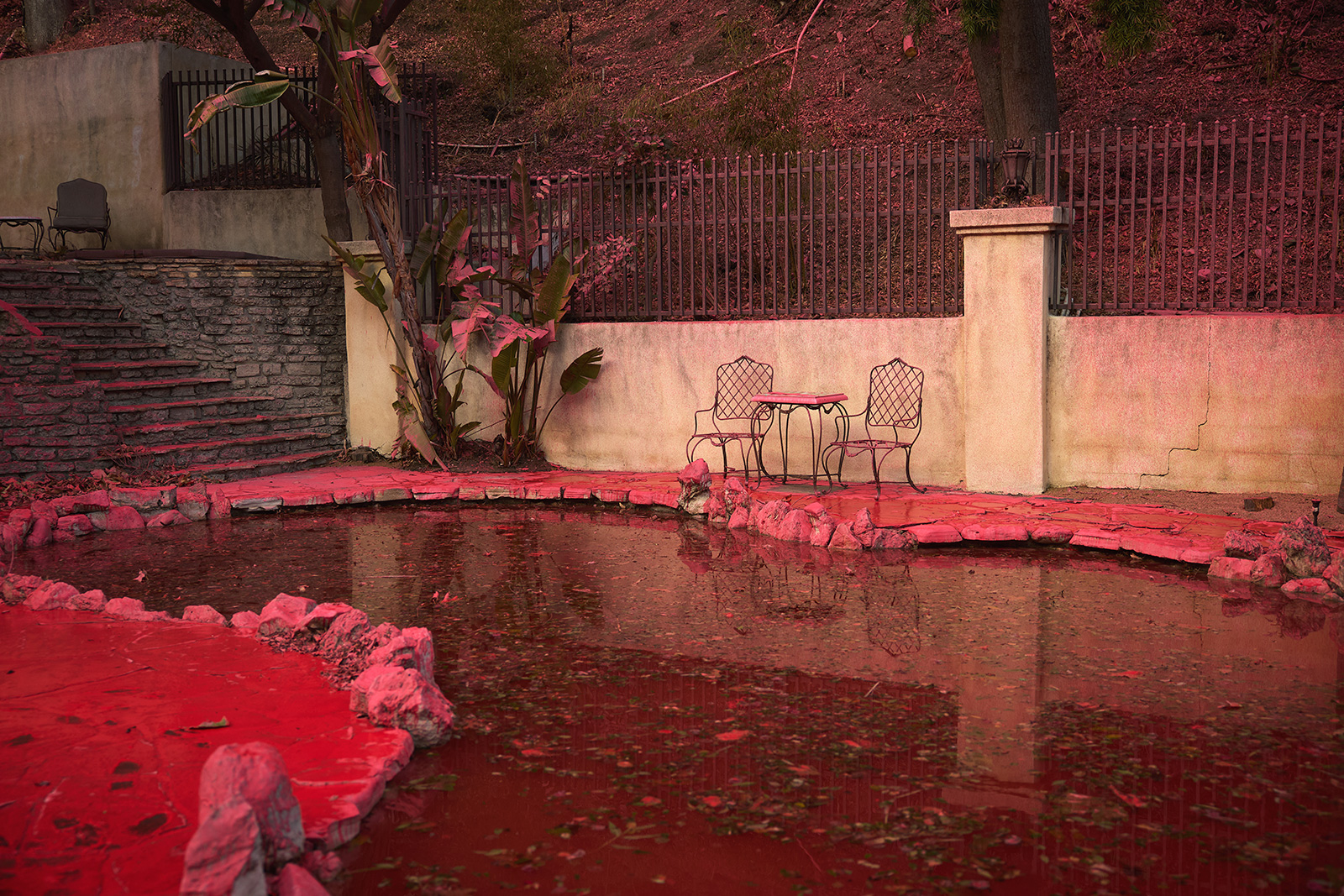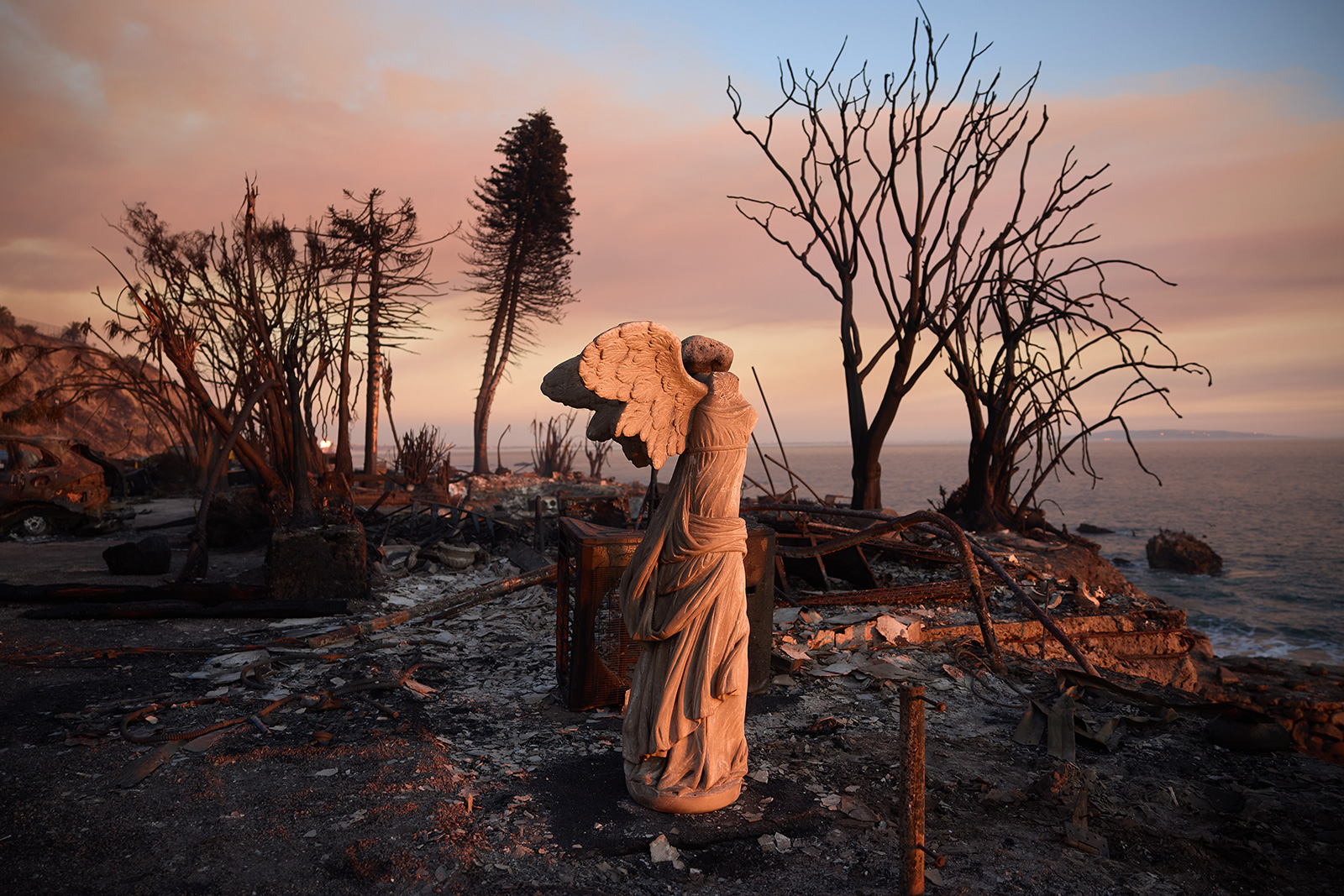California On Fire
The Palisades and Eaton fires were highly destructive wildfires that began burning on January 7, 2025, and lasted 24 days. The fires killed 30 people, burned over 37,000 acres, and destroyed over 15,000 structures. During this time the Southern California coast had experienced eight months without any measurable rainfall, and much of the region had fallen into moderate drought conditions. That combined with a life-threatening windstorm of Santa Ana winds created an out of control situation for fire fighters. Scientists have stated that human-caused warming is generally making fires in California and the rest of the West larger and more severe.
In 2024 Los Angeles’ summer heat persisted late into the fall, including a record-breaking September heat wave. The period from June through December ranked as the third hottest since 1895. The dryness of Los Angeles’ vegetation before the fires was due to both hotter temperatures and a lack of rain. An analysis by UCLA found that about a quarter of that moisture deficit was due to the extreme heat, which was influenced by climate change. “The fact that we have a warmer or drier atmosphere today because of global warming very likely causes large fuels like dead logs and fence posts and other materials that you find in urban environments to be drier than they would be otherwise,” says Park Williams, a hydroclimatologist at UCLA. “These fires are very likely more intense and dangerous in urban environments because of global warming.” Another analysis by World Weather Attribution found that the hot, dry conditions were about 35% more likely because of climate change, as measured by the Fire Weather Index, which looks at temperature, humidity and other weather factors.

